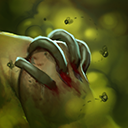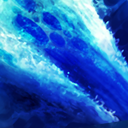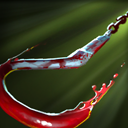Synergy's Basic Guide to Positioning WIP
Synergy
April 1, 2013
Introduction
Hello reader,
I am writing this guide on positioning for my friends. Countless times my friends and myself have found ourselves being singled out and killed where it could easily be avoided. It is easy to make the mistake of overconfidence. After reading this guide I hope you will better understand the simple rules of positioning and how to analyse a situation before judging the best choice of action.
Without further ado, let us begin.
What is positioning?
Positioning is, logically, your position on the map. Basically it is your current positiion relative to a multitude of things
- Your allies
- Your tower
- Your enemy
- Your creeps
A simple example of
bad positioning will be one near the enemy but far from either your
allies,
tower, or for the early game your
creep wave.
Conversely, an example of
good positioning would be one near your
allies, preferably a stunner or healer, your
tower, and behind your
creep wave, typically in the early game where many crucial kills happen.
Positioning during Laning
In almost every game a first blood typically happens within about 5 minutes. This can happen due to a coordinated gank or a greedy tower dive. Although things such as a lack of vision (buy your  Observer Wards people!), it is also due to positioning.
Observer Wards people!), it is also due to positioning.
In the following example I will show an example of decent positioning but a small mistake resulting in First Blood (note this is a relatively low skill match, I was admittedly on my smurfing account)
The following lane is a solo  Drow Ranger up against a dual lane of a
Drow Ranger up against a dual lane of a  Morphling and a
Morphling and a  Pudge. The creep wave has been pushed towards the Radiant tower putting a substantial distance between the
Pudge. The creep wave has been pushed towards the Radiant tower putting a substantial distance between the  Drow Ranger and her tower.
The
Drow Ranger and her tower.
The  Pudge walks up past the Dire creeps looking for a kill. The
Pudge walks up past the Dire creeps looking for a kill. The  Drow Ranger, slow to react, doesn't retreat until it is too late. She is hooked into range of
Drow Ranger, slow to react, doesn't retreat until it is too late. She is hooked into range of  Rot.
A single
Rot.
A single  Waveform and right click gives the
Waveform and right click gives the  Morphling First Blood.
Morphling First Blood.
The  Drow Ranger's positioning, while not fantastic, has some points to take note of.
Drow Ranger's positioning, while not fantastic, has some points to take note of.
In this image, the thick red line represent the path of  Pudge's hook. Due to
Pudge's hook. Due to  Drow Ranger's current position
Drow Ranger's current position  Pudge is unable to get in line for a
Pudge is unable to get in line for a  Meat Hook. The dotted line represents the path
Meat Hook. The dotted line represents the path  Pudge has to take in order to threaten Drow. In a solo vs dual lane scenario it is wise for the solo to be playing extremely cautiously and alertly, which was not the case for this Drow. If she was standing at the area marked by the red circle she might have had more time to react.
Keep in mind the attack range of your hero.
Pudge has to take in order to threaten Drow. In a solo vs dual lane scenario it is wise for the solo to be playing extremely cautiously and alertly, which was not the case for this Drow. If she was standing at the area marked by the red circle she might have had more time to react.
Keep in mind the attack range of your hero.  Lina and
Lina and  Drow Ranger have the highest at 650, while some heroes such as
Drow Ranger have the highest at 650, while some heroes such as  Morphling and
Morphling and  Zeus have pitiful range, so positioning is more important for those heroes. Even more so for melee heroes, as going into range for a last hit could lead to a death.
Zeus have pitiful range, so positioning is more important for those heroes. Even more so for melee heroes, as going into range for a last hit could lead to a death.
Positioning on the Middle Lane
The Mid-lane is a little bit different due to the high ground elements. Ranged heroes have a 25% chance to miss on their attacks when attacking uphill. Furthermore, without a ward you will not be able to see uphill when on the low ground, unless a unit attacks or casts a spell.
In the following examples I will show the importance of positioning which could win or lose your lane.
In the above image the
 Invoker
Invoker, played by myself, is laning against a
 Warlock
Warlock solo mid. As the creep wave is mostly cleared, I decide to trade hits with the
 Warlock
Warlock. This is extremely risky as despite there being few creeps, if I get unlucky with misses I will do less damage than I end up taking. Furthermore I run the risk of being ganked by a roaming support hero which would end in a sure kill.
 Warlock
Warlock follows up our trading of hits with a
 Shadow Word
Shadow Word. As my base damage is significantly higher I am under the impression I will do a lot of damage to him. Generally, this is extremely reckless, however I get lucky and hit most of my attacks. I decide to pull up once I have taken significant amounts of damage. Had there been a roaming support I would have died.
During my retreat I switch to
 Quas
Quas to counteract the DoT damage. I realise that
 Warlock
Warlock is out of position when he follows me uphill when the creep wave arrives so I quickly exploit his poor positioning with a
 Cold Snap
Cold Snap that triggers multiple times due to the creeps, nearly netting me a kill and putting the
 Warlock
Warlock out of EXP range momentarily. The
 Warlock
Warlock's positioning mistake costs him the lane.
This next example happens a bit later, but nets me a kill once again due to a foolish mistake by the
 Warlock
Warlock.
The
 Warlock
Warlock finds a double damage rune at bottom and is coming to gank me Mid. I see him coming and retreat to my tower.
He gives up on his gank, but his poor pathing leaves him in tower range without any allied creeps to tank for him. With
 Cold Snap
Cold Snap already invoked from before I capitalise on this poor positioning.
A few right clicks on the squishy
 Warlock
Warlock nets me an easy kill; the Double Damage rune wasted.
If you are wondering, I ended up losing that match.
Chapter Title
More to come...





























Quick Comment (3) View Comments
You need to log in before commenting.